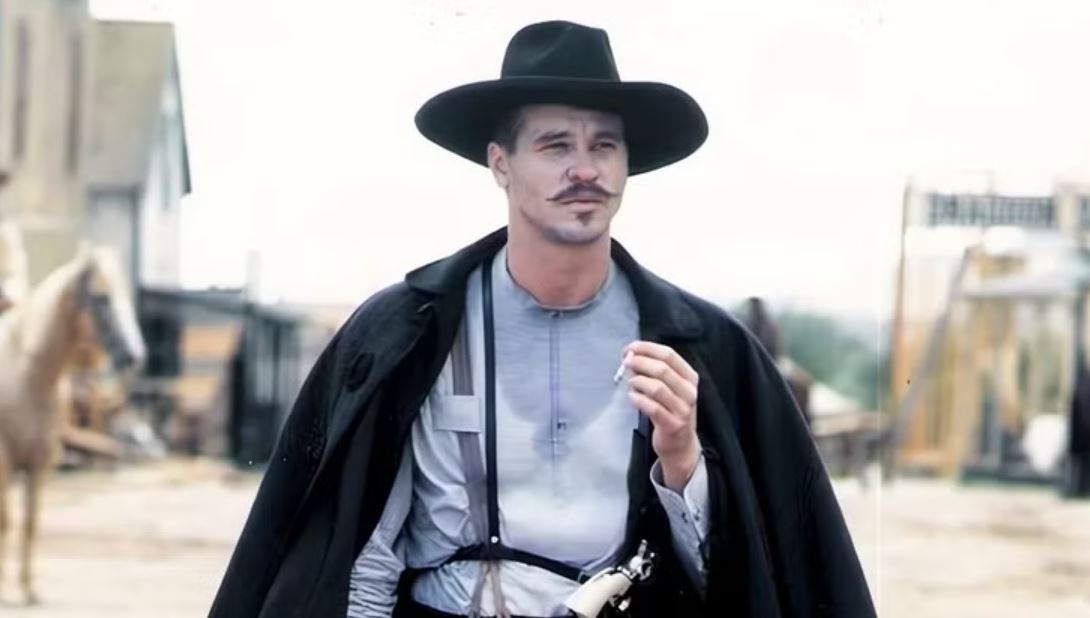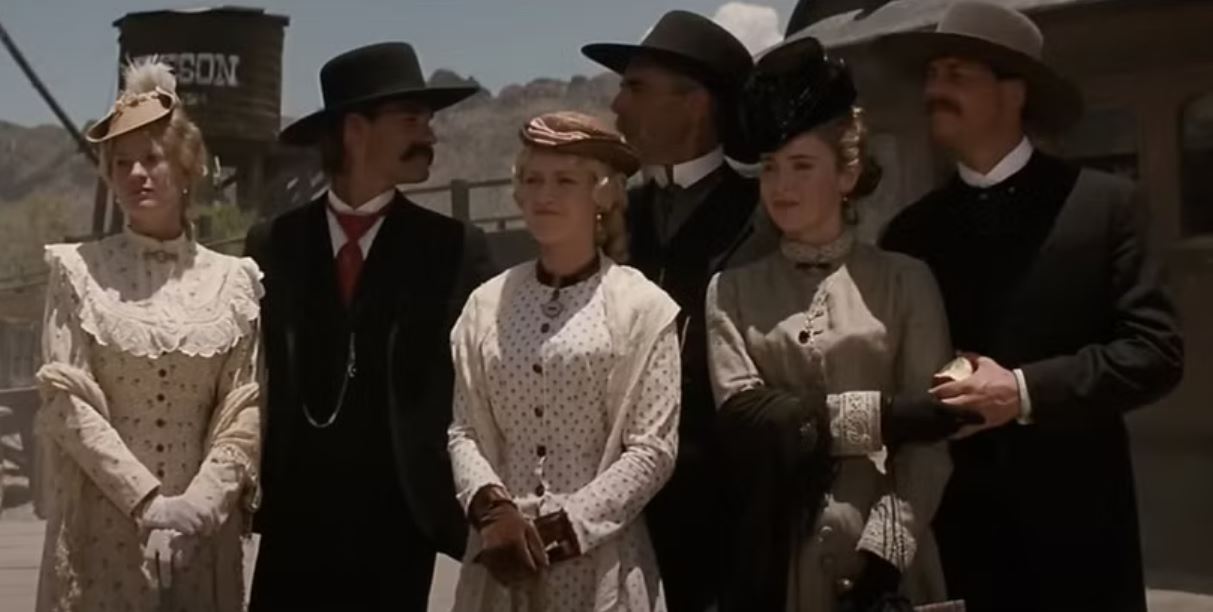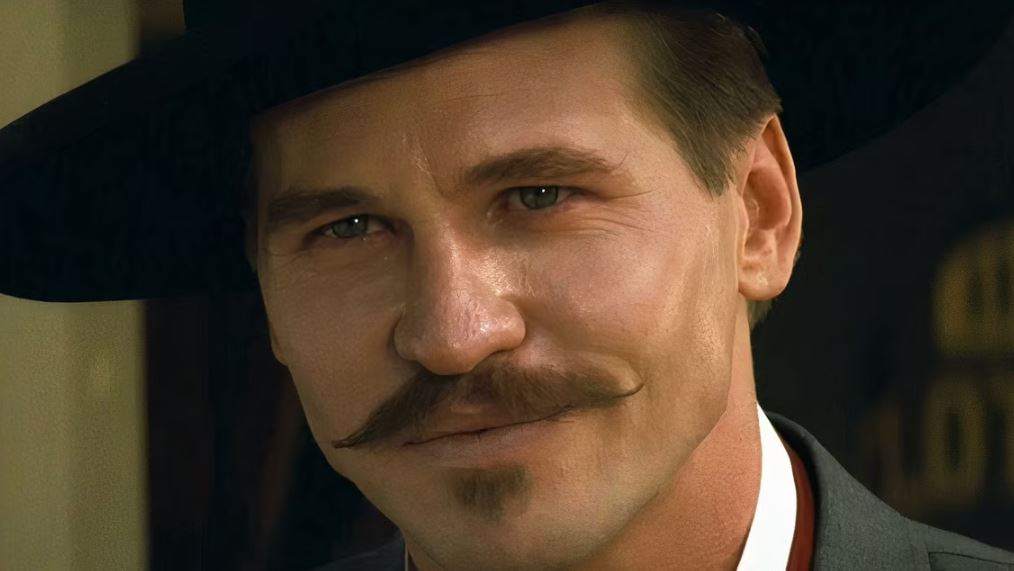It’s hard to understate the influence of Kevin Jarre’s Tombstone. The 1993 film was an instant hit that changed the course of the Western genre. Its meticulous production and eye for detail have cemented the work as a genre staple, and it’s hard to say that the status isn’t deserved. Everything about the film — from its star-studded cast to its unbeatable atmosphere — is impeccable. Even the characters get special attention. Everyone’s period-appropriate attire highlights their individual personalities. Likewise, each performer injects something special into their role. Val Kilmer famously added plenty of literal sweat to his performance as Doc Holliday.
But that’s not the only thing Tombstone gets right. In many ways, Kevin Jarre’s direction acts like a stageplay’s script. Everyone has a specific role, a defined “place,” and a fixed archetype. The gang members play the villains, and they’re dressed for the part. Likewise, Kurt Russell’s portrayal of Wyatt Earp is the epitome of the suave, morally ambiguous gunman. And all these details are apparent from the film’s outset.
Tombstone Instantly Sets the Tone for Each Characters
- Director Kevin Jarre’s dedication to historical accuracy meant everyone was forced to wear heavy wool outfits.
- Kilmer improvised his iconic wink at the beginning of the O.K. Corral shoot-out.
- The real Wyatt Earp’s fifth cousin, appropriately named Wyatt Earp, portrayed Billy Claiborne.
Obviously, everyone in Tombstone gets a fitting wardrobe — and that’s intentional wordplay. The top-notch tailoring ensures the clothes fit in a literal sense. But it’s more important that these outfits carry the right gravitas. To put it more casually, everyone’s fit needs to have the right “vibe.”

Western darling Kurt Russell gets the most iconic getup. His outfit is the embodiment of a classic lawman. The darker colors lend him a shadowy look and emphasize that all-Western outline. Conversely, the slightly lighter tones of Sam Elliott’s wardrobe highlight his classical morality. That point receives an additional nod with his white hat, a typical symbol of a Western work’s “good guys.”
Even the simple act of speaking is enough to tell characters apart. Russell’s classical twang gives Earp a rugged, grizzled feeling that’s perfect for such a divisive figure. Of course, of the actors, the most iconic is likely Val Kilmer. His gentile affect gives a much-needed sense of education and class to his portrayal of the ill-fated Doc Holliday. At the same time, his sleek delivery and silky tones reflect Holliday’s sweet-talking nature.
The Importance of Introductions in Tombstone
- Around 30 shots were fired in just 30 seconds for the film’s iconic gunfight.
- Val Kilmer also improvised his whistling as he rode to the O.K. Corral.
- Willem Dafoe was originally cast as Holliday, but controversies surrounding his role in The Last Temptation of Christ forced the team to bring on Kilmer.
Speaking of Val Kilmer, his introduction in Tombstone may be one of the best examples of the perfect cinematic entrance. He sits in a smoky room, rolls a coin over his knuckles, and cuddles with a gorgeous woman. He glances at his cards before he speaks, with that honeyed Southern accent, saying, “$500? Must be a peach of a hand.” Then, he glances around the table.
It’s the perfect atmospheric shot. That smoky haze mirrors the dusty streets of classic Western films. The poker game setup reflects the most popular vices of the era — namely, alcohol, gambling, tobacco, and sex. The darkened rooms reflect the era’s lack of electric lighting and — in a more cerebral sense — the film’s moral and personal arc.
Of course, every other detail is perfect. The clothes fit the period, and everyone has a role. There’s the anxious gambler and the sore loser. Even as the situation escalates, the crowd remains fairly calm. It’s the Wild West, after all; tempers are bound to flare up beneath the hot desert sun. When the inevitable fight begins, there’s a sense of resigned calm. Each of these details may seem insignificant, but they’re essential parts of the larger setting.
Think of them as stagehands. Each subtle detail is carefully put in place, and the result is a clear, vivid picture of the world in which the film occurs. Tombstone is the quintessential “school of hard knocks” Western. As every setpiece settles, it forms a clearer picture. The crowd’s initial disinterest reflects the banality of violence. This is no Bonanza-style cowboy fantasy; it’s a life-or-death historical drama.

Introducing Val Kilmer as Doc Holliday
- Kilmer appropriately entitled his autobiography I’m Your Huckleberry.
- Kilmer requested his death bed be filled with ice to force him to feel the pain Holliday must have felt.
- Producers also considered Jeremy Irons for the role of Doc Holliday.
And the same amount of careful setup is, naturally, invested in Val Kilmer’s character. His sleeked-back hair and oiled ‘stache betray his status and wealth. Likewise, his calm demeanor shows that he has experience; he’s played the game before. Eagle-eyed viewers will also notice that he has his gun resting on his lap throughout the game. He tries to sweet talk his way through the situation before resorting to violence, yet his fighting instincts are readily apparent.
It’s a remarkably vivid introduction. In less than five minutes, Kilmer seamlessly becomes the famed Doc Holliday. He assumes his mannerisms and slides into his now-iconic role. On a technical level, it’s a master class in acting. Kilmer’s subtle actions capture the essence of nonverbal techniques, while his words are perfectly delivered and impeccably timed. Yet, it’s also a practical victory, as it gives viewers a comprehensive look at one of Tombstone’s main protagonists.
Already, viewers know that Doc Holliday is a no-nonsense stereotypical Western hero. He has the experience necessary to handily fight his foes and the sophistication of a medical doctor. His detailed guns are yet another testament to his wealth, and their white grips are a nod to his “good” alignment.
Of course, his opening words are just as impactful. They’re delivered with more than a silver-tongued accent. They also carry a sense of unshakable confidence. It’s apparent that Holliday has the upper hand; nobody needs to see his cards to know as much. When he lays out his hand, that same sense of haughty victory remains.
The concept extends beyond the poker game, though. That almost irreverent confidence is a vital part of Kilmer’s portrayal of Holliday. It’s the perfect encapsulation of the gunslinger’s unrivaled grit and swagger. Wyatt Earp may be the most infamous of the bunch, but Holliday’s devilishly smooth mannerisms and unbeatable swagger are just as iconic.
Of course, even the talented Kilmer can’t claim all the credit for cultivating Holliday’s pop culture image. While the historical figure met an early demise, his essence has been twisted and shaped in the many decades since. Whether or not the result is true to his actual essence is irrelevant. Hollywood’s influence has handily cemented Doc Holliday as something akin to Kilmer’s suave bullet-dodging lawman.
Still, Tombstone’s version has certainly done wonders for Holliday’s continued relevance. Kilmer’s impeccable acting remains a crowning achievement in the long-dead man’s extended cinematic legacy. Its unparalleled gravitas has yet to be beaten, and Kilmer’s dedication to his craft shines in every scene. It’s nigh impossible to separate Kilmer’s appearances from his character, and his masterful introduction plays a massive part in the immersion.
